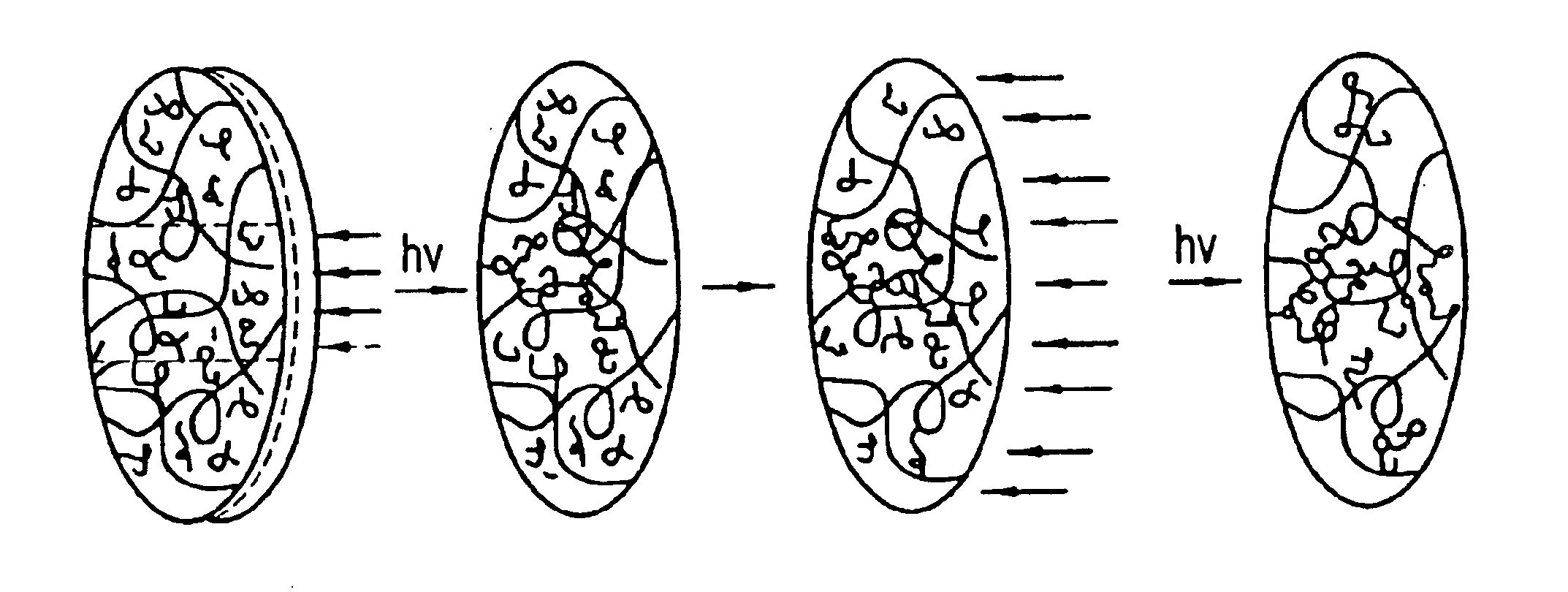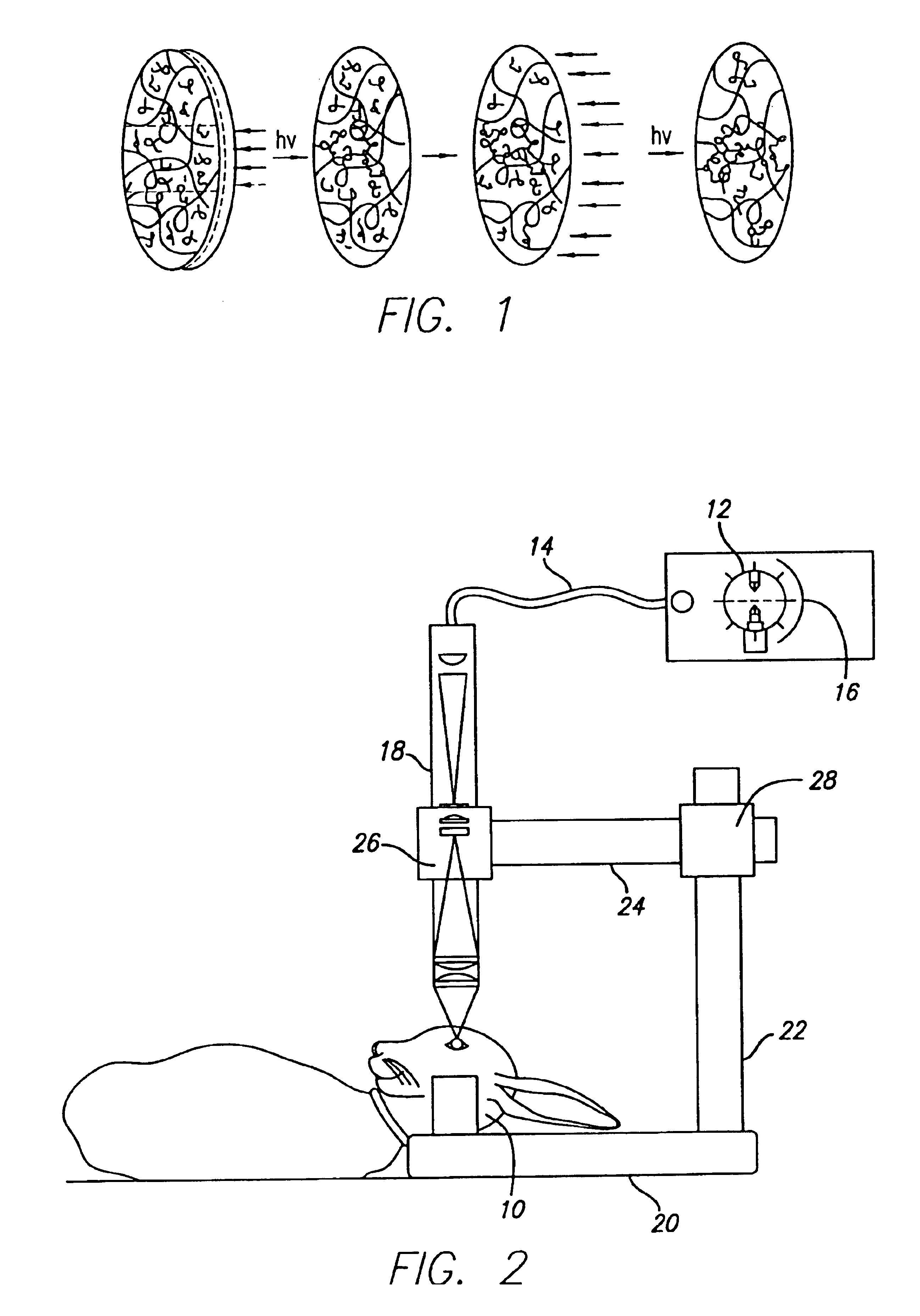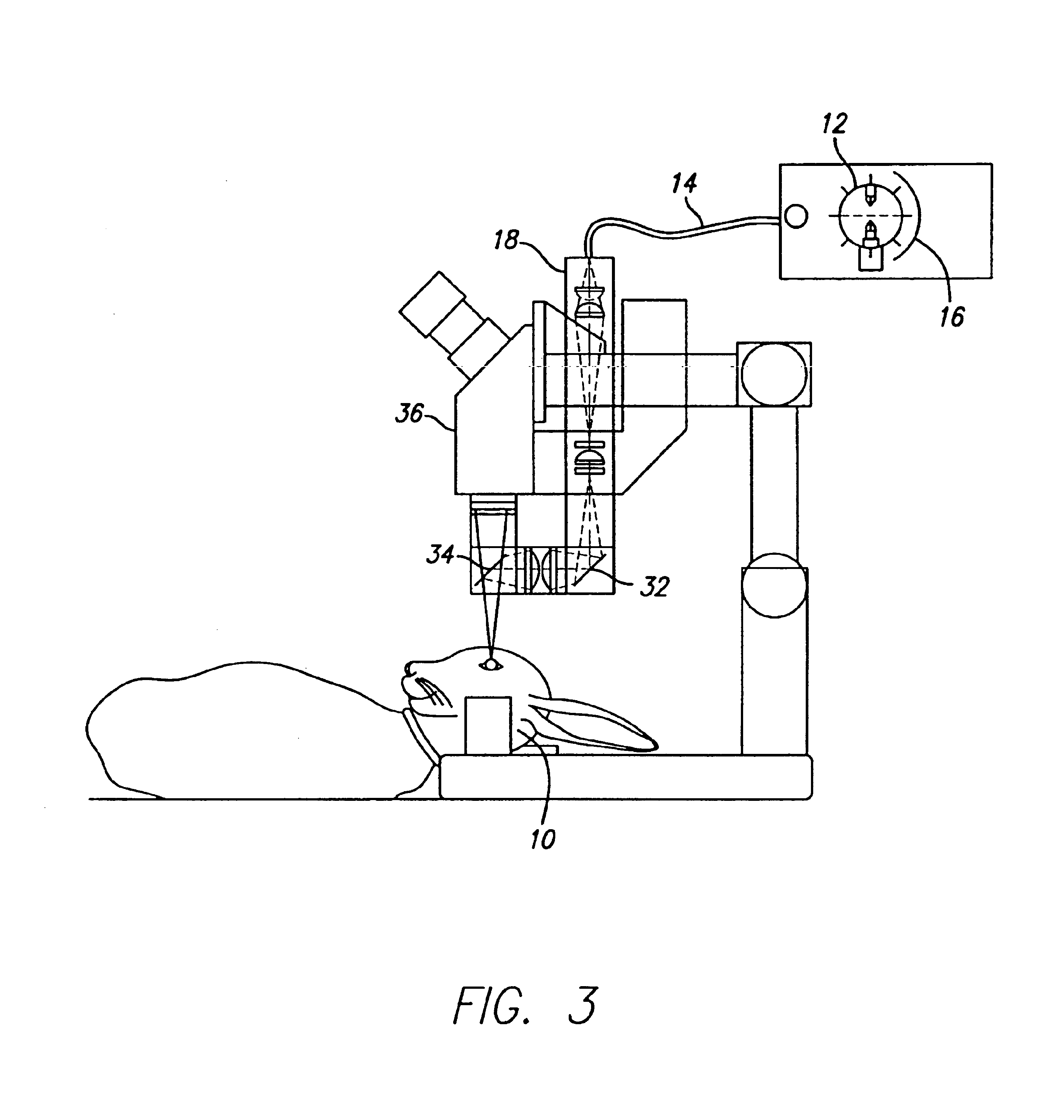Delivery system for post-operative power adjustment of adjustable lens
a technology of power adjustment and delivery system, which is applied in the direction of spectales/goggles, instruments, applications, etc., to achieve the effect of convenient use for doctors
- Summary
- Abstract
- Description
- Claims
- Application Information
AI Technical Summary
Benefits of technology
Problems solved by technology
Method used
Image
Examples
Embodiment Construction
[0032]Generally, a light adjustable lens comprises a first polymer matrix and a refraction modulating composition dispersed therein. The first polymer matrix forms the optical element framework and is generally responsible for many of its material properties. The refraction modulating composition may be a single compound or a combination of compounds that is capable of stimulus-induced polymerization, preferably photo-polymerization. As used herein, the term “polymerization” refers to a reaction wherein at least one of the components of the refraction modulating composition reacts to form at least one covalent or physical bond with either a like component or with a different component. The identities of the first polymer matrix and the refraction modulating compositions will depend on the end use of the optical element. However, as a general rule, the first polymer matrix and the refraction modulating composition are selected such that the components that comprise the refraction mod...
PUM
| Property | Measurement | Unit |
|---|---|---|
| power | aaaaa | aaaaa |
| wavelength | aaaaa | aaaaa |
| wavelengths | aaaaa | aaaaa |
Abstract
Description
Claims
Application Information
 Login to View More
Login to View More - R&D
- Intellectual Property
- Life Sciences
- Materials
- Tech Scout
- Unparalleled Data Quality
- Higher Quality Content
- 60% Fewer Hallucinations
Browse by: Latest US Patents, China's latest patents, Technical Efficacy Thesaurus, Application Domain, Technology Topic, Popular Technical Reports.
© 2025 PatSnap. All rights reserved.Legal|Privacy policy|Modern Slavery Act Transparency Statement|Sitemap|About US| Contact US: help@patsnap.com



